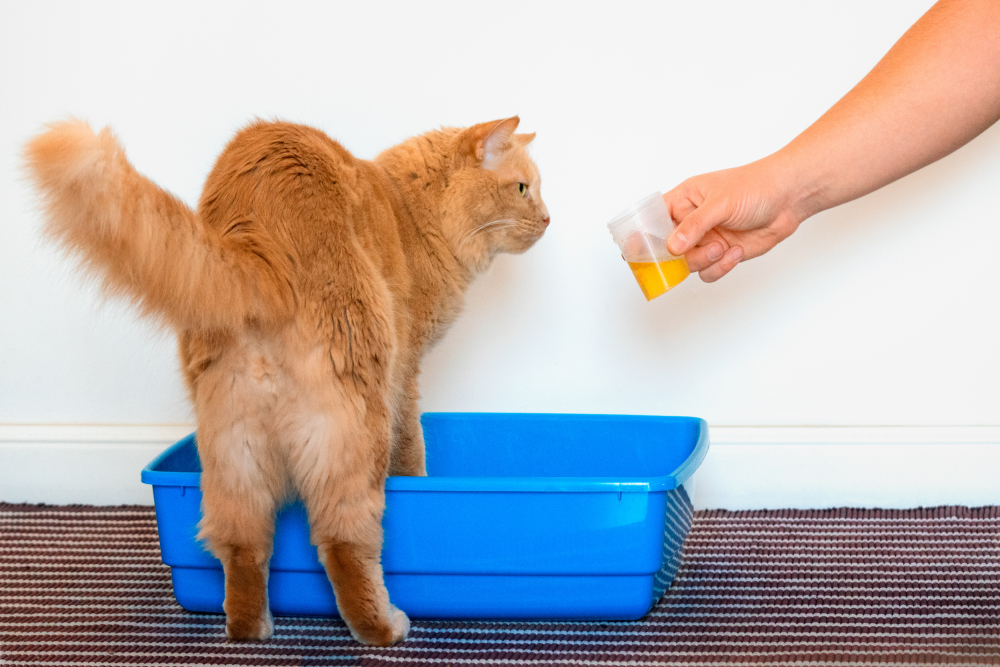Urinary Blockages in Cats: Why Your Male Cat’s Straining Could Be Serious
Urinary blockages in male cats are life-threatening emergencies that require immediate veterinary attention. If your cat is straining to urinate or showing signs of distress, acting quickly can save their life. At Mission Veterinary Clinic in Granada Hills, CA, our experienced team is equipped to handle these emergencies with skill and compassion. Let’s explore what urinary blockages are, their symptoms, treatment options, and how to prevent them.
Understanding Urinary Blockages in Cats
A urinary blockage occurs when the urethra, the tube that carries urine from the bladder to the outside of the body, becomes obstructed. This prevents normal urination and can lead to a buildup of toxins in the body, potentially causing severe complications.
Common Causes:
- Urinary Crystals or Stones: These can form due to a high concentration of minerals in the urine.
- Mucus Plugs: A mix of proteins, cells, and other debris that clogs the urethra.
- Inflammation or Swelling: Often associated with Feline Lower Urinary Tract Disease (FLUTD).
Male cats are at higher risk because their urethras are narrower and longer than those of female cats, making blockages more likely. For more detailed information on urinary conditions in cats, visit the Feline Lower Urinary Tract Disease – AVMA page.
Recognizing the Signs of Urinary Blockages
Prompt recognition of urinary blockage symptoms is essential for seeking immediate care.
Early Signs:
- Frequent trips to the litter box with little to no urine output.
- Straining or crying while attempting to urinate.
- Excessive licking of the genital area.
Advanced Signs:
- Lethargy, vomiting, or loss of appetite.
- A swollen abdomen.
- Pale gums, weakness, or collapse, indicating shock.
Severe blockages can lead to kidney failure or death within days. If your cat is exhibiting these symptoms, don’t wait—seek emergency veterinary care. Learn more about urgent pet care on our Emergency Pet Symptoms: When to Seek Immediate Care page.
Why Are Male Cats More Prone to Blockages?
The anatomy of male cats puts them at greater risk. Their longer and narrower urethras can easily become obstructed by even small crystals or plugs. Additionally, breeds like Persians and Himalayans are more predisposed to urinary issues. Risk factors include:
- Diets high in magnesium and phosphorus.
- Insufficient water intake.
- Stress from environmental changes or household disruptions.
Understanding these risks can help you take proactive steps to protect your cat’s urinary health.
Diagnosing Urinary Blockages
At Mission Veterinary Clinic, we use advanced diagnostic tools to identify and address urinary blockages promptly.
How We Diagnose:
- Physical Examination: Checking for a distended bladder and signs of pain.
- Urinalysis: Identifying crystals, blood, or infections in the urine.
- Imaging: X-rays or ultrasounds to locate stones or blockages.
Quick diagnosis is critical to prevent kidney damage or systemic infection- or even death.
Treatment Options for Urinary Blockages
Once a blockage is diagnosed, immediate intervention is necessary.
Treatment Steps:
- Catheterization: Inserting a catheter to relieve the blockage and empty the bladder.
- Bladder Flushing: Removing debris and preventing further blockages.
- Medications: Pain relief, anti-inflammatory drugs, and antibiotics.
In severe or recurrent cases, a surgical procedure called perineal urethrostomy may be performed. This involves creating a wider opening in the urethra to reduce the likelihood of future obstructions. Post-treatment care may involve protective devices like an e-collar. For details about recovery tools, visit Why Does My Dog Need an E-Collar?.

Preventing Urinary Blockages
Preventive care is essential to minimize the risk of urinary blockages.
Tips for Prevention:
- Hydration: Encourage your cat to drink more water by using fountains or offering wet food.
- Balanced Diet: Feed your cat a diet that reduces mineral buildup in the urine.
- Stress Management: Create a calm, enriched environment for your cat.
- Routine Check-Ups: Regular vet visits can catch urinary issues before they become severe.
By taking these steps, you can help keep your cat healthy and reduce the risk of this dangerous condition.
How Mission Veterinary Clinic Can Help
At Mission Veterinary Clinic, we provide expert care for cats with urinary blockages, from initial diagnosis to advanced surgical solutions. Our team is committed to ensuring your pet receives the highest standard of care in a compassionate and supportive environment.
With over 20 years of experience, our Team is here to support you and your pet when you need it most.
For more information or to schedule a visit, visit our Contact Us page. Your pet’s health and well-being are our top priorities.










Leave A Comment